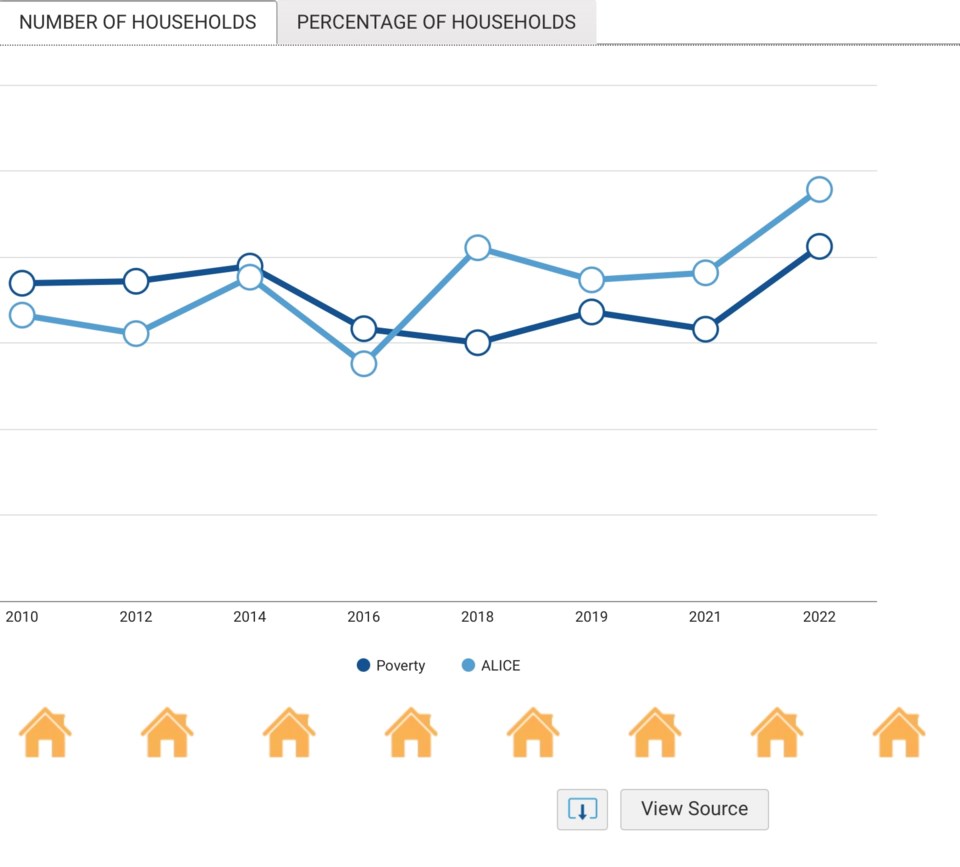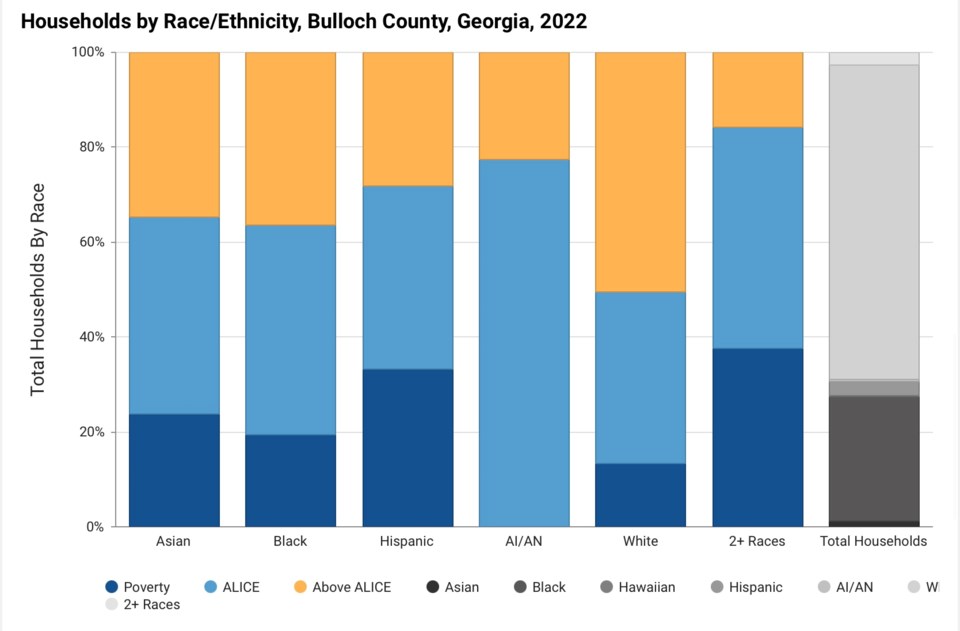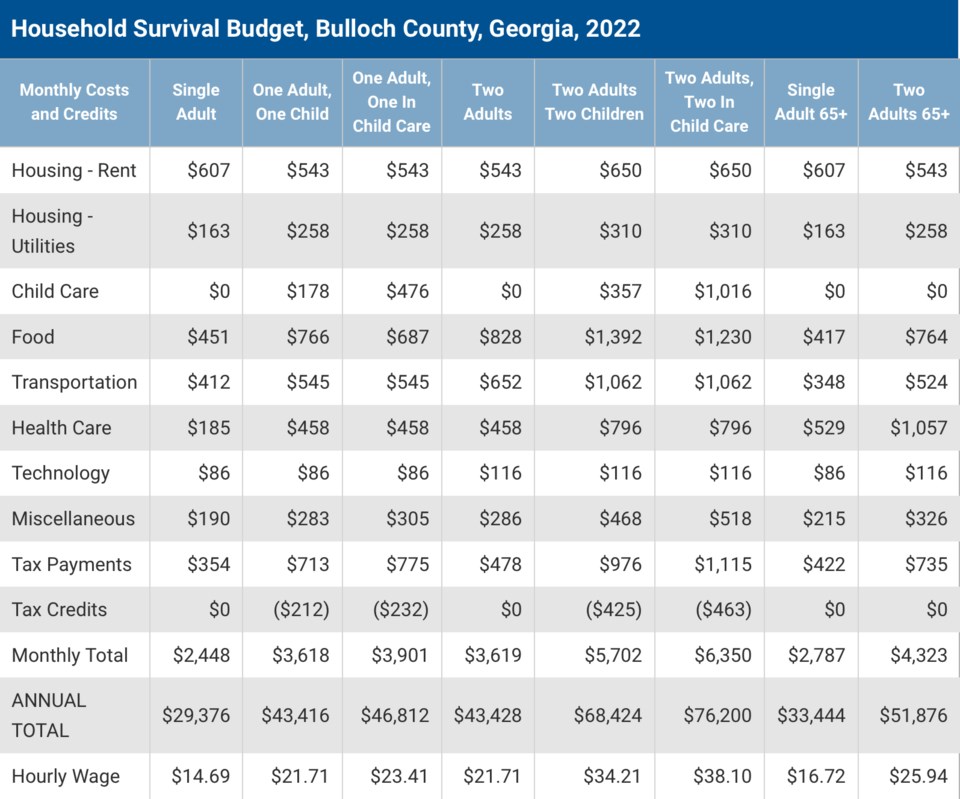This article is the first part of a series that will examine local data surrounding the challenges facing so many in our community.
We begin this series by looking at the gap between wages and cost of living.
In Bulloch County, the gap between wages and the rising cost of living is putting increased financial pressure on local workers. Many fall into the ALICE (Asset Limited, Income Constrained, Employed) category—households that earn above the Federal Poverty Level but still struggle to afford the basics.
ALICE families are vital to the local economy, filling essential roles in industries like health care, retail, and education, yet they live on the edge of financial stability.
According to recent data, 37% of households in Bulloch County live below the ALICE Threshold, meaning they either live in poverty or earn too much to qualify for federal assistance but too little to cover basic household expenses like housing, food, and transportation. This percentage reflects a growing problem: even as the economy improves, many working families are being left behind.

Rising Costs and a Labor Shortage
The most pressing concerns for ALICE households in Bulloch County are rising housing and transportation costs. Rent for a modest two-bedroom apartment has increased significantly in recent years, leaving many families stretched thin. Meanwhile, the lack of public transportation options in rural areas makes reliable vehicle ownership essential for most workers. The cost of gas, insurance, and vehicle maintenance often eats into already-tight budgets.
Local businesses are feeling the effects of this growing economic strain. The ongoing labor shortage is making it difficult to recruit and retain employees, especially in lower-wage sectors. While unemployment in Bulloch County remains relatively low, many employers struggle to compete with rising wages in nearby urban areas or other industries. Some workers are forced to leave the area altogether in search of higher pay or more affordable living conditions.

The Ripple Effect on the Community
When wages don’t match the rising cost of living, the impact ripples throughout the community. Workers are forced to make tough choices—delaying health care, skipping meals, or taking on multiple jobs just to stay afloat. Businesses face slower growth and reduced services, and the housing market becomes even more strained as demand for affordable options far exceeds supply.
Efforts to address these challenges are underway. Local organizations and employers are exploring ways to provide wage increases and offer more competitive benefits. Expanding affordable housing, improving access to reliable transportation, and investing in workforce development programs are crucial steps toward creating a more sustainable future for workers and employers in Bulloch County.

Moving Forward
Understanding the challenges faced by ALICE households in Bulloch County is a crucial first step toward meaningful change. By supporting efforts to bridge the gap between wages and the cost of living, the community can ensure that everyone—employers and workers alike—has the opportunity to thrive.
Click here to view the 2024 ALICE report for Georgia.




